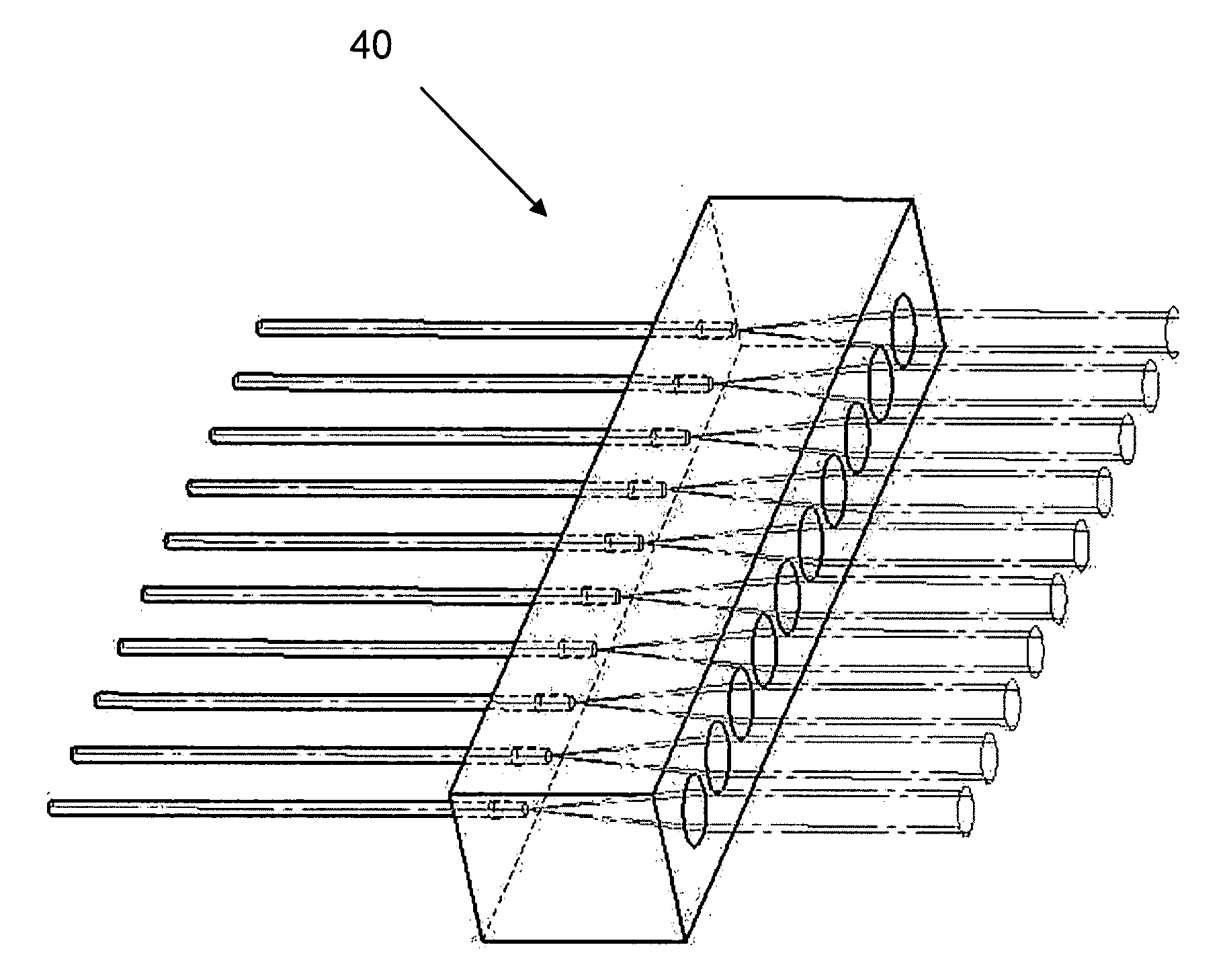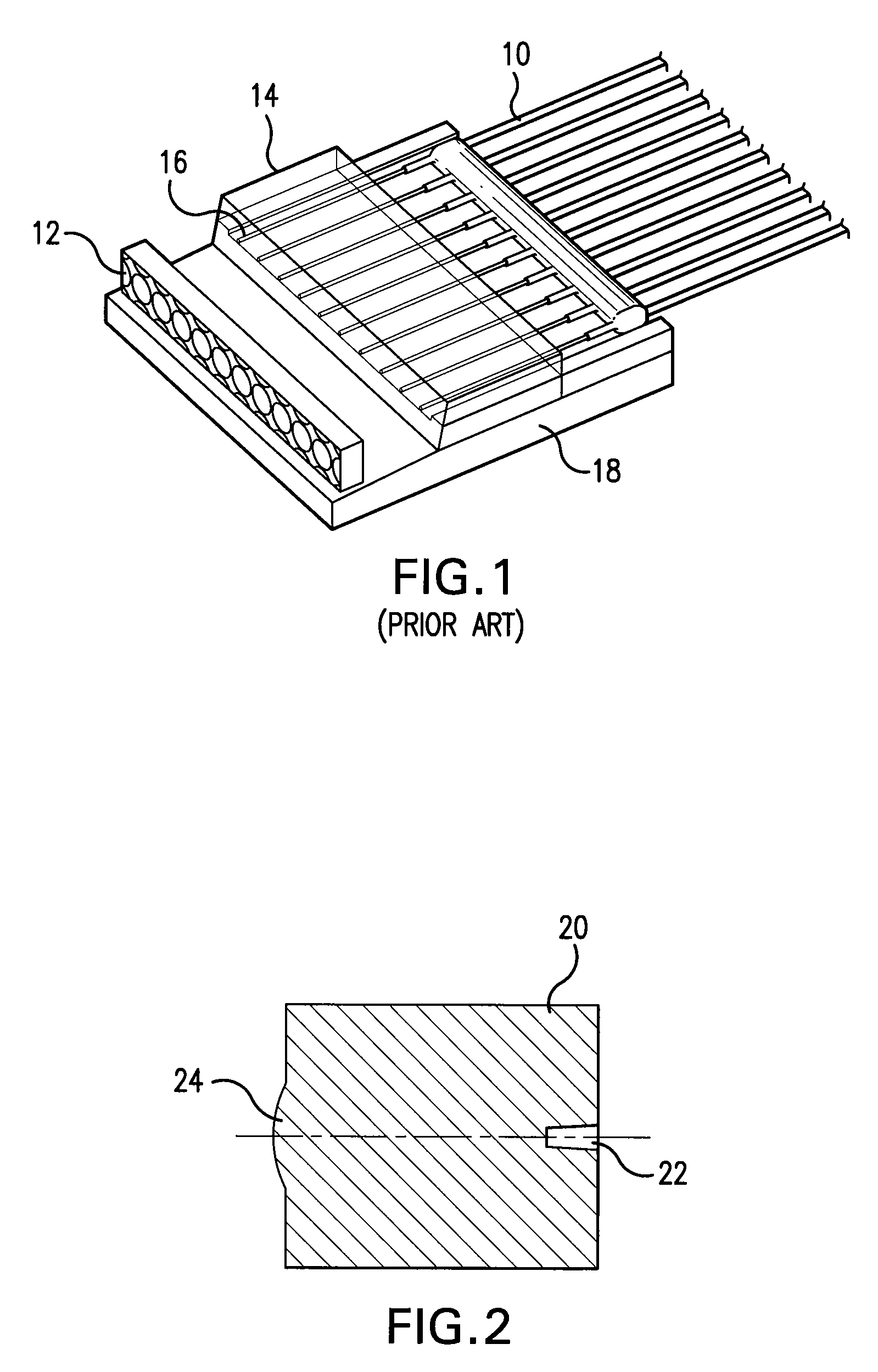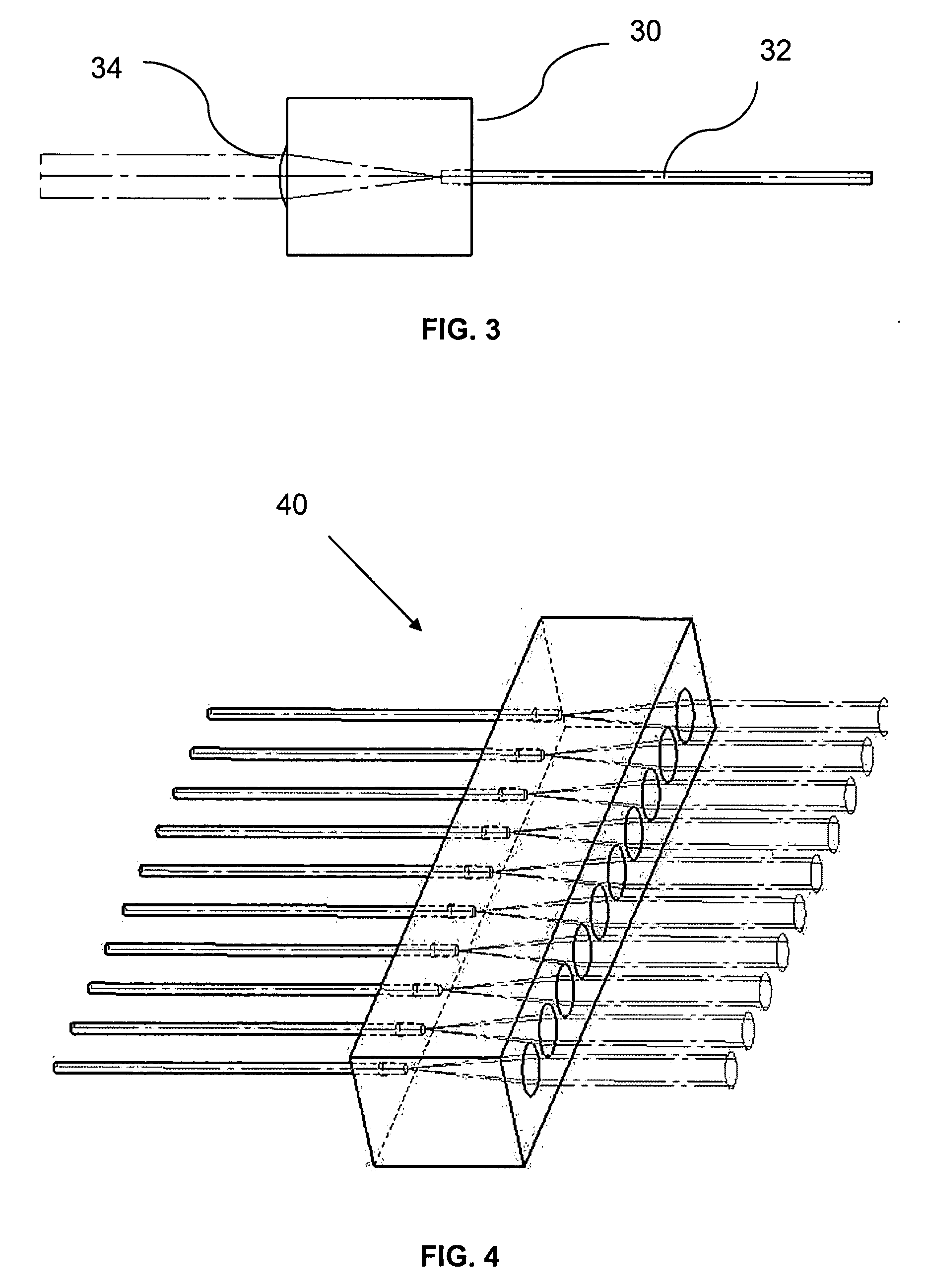Collimator array
a collimator array and fiber technology, applied in the field of fiber optical collimator arrays, can solve the problems of cost advantage loss and other methods of molding, and achieve the effect of reducing the relative alignment accuracy of each channel and reducing the cost advantag
- Summary
- Abstract
- Description
- Claims
- Application Information
AI Technical Summary
Benefits of technology
Problems solved by technology
Method used
Image
Examples
Embodiment Construction
[0025] Reference is now made to FIG. 2 which illustrates schematically a cross sectional view of a transmissive collimator array according to one embodiment of the present invention, showing a single channel. The collimator transparent block 20 of this single channel preferably has a hole 22 into which the bare fiber is inserted, and a lens 24 aligned exactly opposite the lens.
[0026] Reference is now made to FIG. 3 which illustrates the single channel of the collimator array of FIG. 2 with an input fiber 32 attached. The depth of the hole in the collimator block 30 is arranged to be such that, when the fiber 32 is pushed to the bottom of the hole, the distance of the fiber end from the lens, taking into account the refractive index of the material of the device, is such that a collimated beam is output from the lens 34. Alternatively and preferably, since there may still be some element of inaccuracy even in a precision molded part, whether in dimensions or, more likely, in refract...
PUM
 Login to View More
Login to View More Abstract
Description
Claims
Application Information
 Login to View More
Login to View More - R&D
- Intellectual Property
- Life Sciences
- Materials
- Tech Scout
- Unparalleled Data Quality
- Higher Quality Content
- 60% Fewer Hallucinations
Browse by: Latest US Patents, China's latest patents, Technical Efficacy Thesaurus, Application Domain, Technology Topic, Popular Technical Reports.
© 2025 PatSnap. All rights reserved.Legal|Privacy policy|Modern Slavery Act Transparency Statement|Sitemap|About US| Contact US: help@patsnap.com



